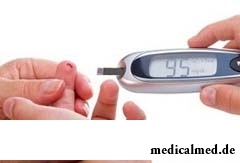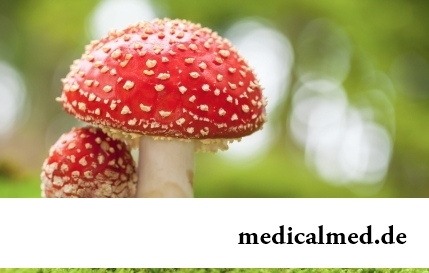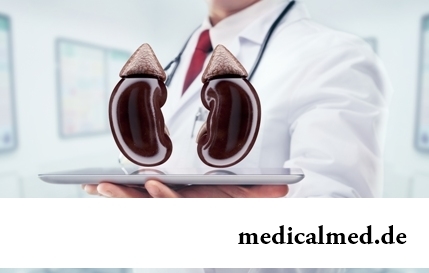





Diabetes mellitus
General characteristic of a disease
Diabetes mellitus – one of the most widespread diseases in the world. More often than a diabetes mellitus only cardiovascular and oncological pathologies are annually diagnosed. 3% of the population of the planet long for approximate calculations from a diabetes mellitus today. And according to forecasts of physicians in 15-20 years double increase in the people sick with a diabetes mellitus is expected.
Diabetes mellitus reasons

The main reason of a diabetes mellitus – the disturbances of carbohydrate metabolism which happened in an organism. This phenomenon is caused by one of two factors: or the organism is not able to perceive insulin, or its quantity does not cover need of the person.
There are many versions about the diabetes mellitus reasons. One of them – a hereditary etiology of a disease. Family predisposition to pathology meets at the I type of a diabetes mellitus. It is provoked by a viral infection (flu, measles or a mumps), activating in an organism process of destruction of insulinobrazuyushchy cells.
The hereditary reason of a diabetes mellitus is possible also at the II type of a disease. But in this case the disease is caused by inborn immunity of body tissues to insulin. In a family with predisposition to a disease of the I type the diabetes mellitus occurs at 7-10% of relatives, and at the II type of a diabetes mellitus the probability to ache makes already 80-100%.
Among the reasons of a diabetes mellitus call also excess weight of the patient and a disease of a pancreas: malignant new growths of body or pancreatitis.
As the possible reason of a diabetes mellitus also the injury which damaged tissues of a pancreas and broke its functions can serve. Besides, carry a stress and advanced age of the patient to the reasons of a diabetes mellitus. The probability to ache increases twice with everyone lived decade.
Abuse of sweets as one of the possible reasons of a diabetes mellitus, physicians seriously is not considered, but exactly until hobby for sugar does not lead the person to obesity or diseases of a pancreas.
Diabetes mellitus types
The I type of a diabetes mellitus as was already mentioned, develops as a result of destruction of insulinobrazuyushchy cells. This disease is characteristic of persons of young age.
One of the first symptoms of a diabetes mellitus of the I type is the speeded-up urination. So the human body tries to remove excess of glucose. The polyuria leads to intensive feeling of thirst and big consumption of liquid.
At the I type of a diabetes mellitus, the patient Ketoatsidoz as one of diabetes mellitus complications suffers because of the raised loads of kidneys, dehydration of an organism and accumulation of ketonic ph., can bring the patient to a state of a diabetic prekoma or a coma.
The II type of a diabetes mellitus meets considerably more often the I type of a disease. Patients with an excess weight treat risk group or 40 years are more senior.
At this type of a diabetes mellitus in a human body the normal amount of insulin is developed. But, despite it, blood of the patient contains the increased amount of glucose. At the II type of a diabetes mellitus the organism of the patient has small insulin resistance, i.e. a bad susceptibility to insulin influence.
Expressiveness of symptoms of a diabetes mellitus of the II type depends on degree of nonsensitivity of fabrics to insulin. On weight of a course of a disease it is accepted to allocate easy, average and heavy degree of the II type of a diabetes mellitus.
The pancreatic type of a diabetes mellitus develops because of defeats of tissues of pancreas at pancreatitis, tumors, and also as a result of effects of an unsuccessful operative measure, injuries or an alcohol abuse.
Diabetes mellitus symptoms
Among the main symptoms of a diabetes mellitus of both types call:
- the speeded-up urination,
- polydipsia,
- fatigue.
 dryness and itch of skin,
dryness and itch of skin,- loss of weight,
- spasms in calves,
- decrease in clearness of sight.
At an initial stage of a disease expressiveness of symptoms of a diabetes mellitus, as a rule, not considerable. Further, with progressing of a hyperglycemia, there is a probability of situations sharp increase in level of glucose in blood and development of the critical states demanding emergency medical service.
Diagnosis of a diabetes mellitus
The diagnosis of a disease is established on the basis of classical symptoms of a diabetes mellitus and these laboratory tests. In diagnosis of a diabetes mellitus glucose level in the patient's blood is checked. In disputable cases carrying out loading tests with glucose is recommended.
According to norms at the healthy person glucose indicators in blood do not exceed 6,6 mmol/l on an empty stomach and 11,1 mmol/l after meal. Availability of sugar in the patient's urine – one more diagnostic symptom of a diabetes mellitus.
Treatment of a diabetes mellitus
Treatment of a diabetes mellitus symptomatic. It includes a dietotherapy, medicamentous therapy and physiotherapy exercises. The main goal of treatment at a diabetes mellitus – to normalize exchange processes in an organism and to keep efficiency of the patient.
Diabetes mellitus of the II type call insulinonezavisimy. The major role in treatment of a diabetes mellitus of this look is played by a diet and exercise stresses for normalization of weight.
At initial stages of a disease it is possible to recover carbohydrate metabolism in an organism by means of weight loss. The recommended diet for patients with an excess weight – a minimum of digestible carbohydrates and high-calorific products, refusal of canned food, smoked products, fat meat, mayonnaise, sour cream, nuts, ice cream, jam, candies, etc.
Exercise stresses as one of auxiliary methods of treatment of a diabetes mellitus, help to reduce glucose level to blood, to increase production of insulin and sensitivity of fabrics to it.
At later stages of a disease in treatment of a diabetes mellitus of the II type the drugs increasing sensitivity of fabrics to insulin and oppressing function of intestines on glucose splitting are used: Guanyl guanidines, Tiazolidindiona, α-glikozidaza Inhibitors, etc.
In treatment of a diabetes mellitus of the I type insulin is applied. There are drugs of insulin of different duration of action: short, intermediate and long. Frequency of injections of the drug designed to replace function of a pancreas on production of own insulin depends on time of effect of the medicine.
Treatment of a diabetes mellitus of the I type insulin lifelong. And an important part of therapy of a disease is training of the patient in skills of control over glucose level in blood and to abilities to independently enter to itself insulin.
The scheme of treatment of a diabetes mellitus is formed individually for each patient taking into account his state, weight and age. Independent uncontrolled treatment of a diabetes mellitus insulin extremely hazardously to health.
National treatment of a diabetes mellitus
As auxiliary methods to the main therapy of a disease well proved the following recipes of national treatment of a diabetes mellitus:
- Collecting buds of a birch, fruits of a hawthorn, Veronika's leaves, centaury and burdock in proportions 2:3:1:5:5.
- Medicinal collecting leaves of cowberry, St. John's Wort, corn snouts, mints, an everlastings and leaves of bilberry in proportions 2:4:2:2:4:1.

Also collecting roots of a glycyrrhiza, the leaves of bilberry and fruits of a juniper taken in equal quantities is widely used in national treatment of a diabetes mellitus.
Refer collecting bark of elder to effective methods of national treatment of a diabetes mellitus, Veronika, a shepherd's bag, a horsetail field the fruits of a Sophora, a hawthorn and a dogrose which is also taken in equal proportions.
All above-mentioned structures used in national treatment of a diabetes mellitus help to normalize carbohydrate metabolism in an organism and prevent emergence of nephrological and ophthalmologic complications of a disease.
If to smile all twice a day – it is possible to lower blood pressure and to reduce risk of developing of heart attacks and strokes.

The next flu epidemic leads to the next panic, from year to year we give in on these manipulations: professionally alarming goal...
Section: Articles about health
Dietary supplements (dietary supplements) for the last decades were so thoroughly included into our life that, apparently, it is already impossible to find the person who at least once did not try them. At the same time, most of our compatriots have a vague idea about...
Section: Articles about health
Run - one of the most available and effective ways to revitalize the organism. Knowing about its extraordinary advantage, each of us at least once tried to make jogs, but only the few made these occupations regular. In spite of the fact that in jogging (easy jogging), apparently, there is nothing difficult, the beginning runners often make mistakes which lead to complete cessation of trainings. Let's consider 10 useful tips for beginners who will allow them to make regular п...
Section: Articles about health
One of the useful properties presented to the person by the nature is ability to feel fear. This ability is called a signal...
Section: Articles about health
Mushrooms - the surprising inhabitants of our planet having a set of wonderful qualities. Thanks to one of them, a mold mushroom of Penicillium notatum, the first natural antibiotic - penicillin was received nearly 80 years ago. The mankind is obliged to this opening миллио...
Section: Articles about health
Popular joke that there are no healthy people, and is nedoobsledovanny, most of us considers an honest truth, continually it is necessary to hear that all of us are sick hardly from a school bench. It is hard to say whether so it actually because too often people are treated for nonexistent diseases, and sometimes call a disease what is something another. Sometimes in it the doctors of old school making diagnoses which are cancelled long ago – medicine still unless are guilty...
Section: Articles about health
We present to yours the TOP of the medicamentous means exerting the stimulating impact on a potentiality, i.e. on ability of a muzhcha...
Section: Articles about health
Impossibility to conceive the child – a trouble of many Russian families. During quite long time was considered that main "culprits" of troubles such are women. Modern physicians claim that the situation is different: about a half of failures at...
Section: Articles about health
For many spouses the question of planning of a family is one of the main. The problem of the choice of effective and safe contraceptives at the same time comes out on top. Russians still not often resort to operation of a vasectomy extremely popular in the USA, and also in some European and Asian countries. The reason is simple: most of men simply do not possess the complete information about specifics and effects of this procedure. Let's try to meet this lack and to acquaint readers about those...
Section: Articles about health
Kidneys perform the most important function of clarification of blood from those products of metabolic processes which cannot be used орг...
Section: Articles about health
Many of us, probably, noticed more than once that from intellectual loadings at some point the brain as though "overheats" and "assimilation" of information is strongly slowed down. Especially this problem urgent for persons of age becomes more senior than fifty years. "It is already bad with...
Section: Articles about health
There is an opinion that at low temperatures safety of products is ensured longer and better thanks to what the refrigerator is considered the most suitable place for storage of food. In most cases it is fair, however there is a number of products for which low temperatures – the main reason of their premature damage. Storage in the refrigerator leads to their bystry rotting, emergence of a mold, is followed by loss of vitamins and tastes. What products it is better to remove...
Section: Articles about health
The words "disease" and "patient" not without reason come from one root – "pain". As a rule, symptoms of illnesses thoroughly spoil the patient...
Section: Articles about health
Each of us faces from time to time that other people need the immediate help. We react to it differently: one at once call doctors and police, others rush to victims and try to save them independently. Some at all...
Section: Articles about health
Cold is such painful that each sigh becomes a victory, heat "knocks" down, and the ache in joints forces to think only of pain. Some people with approach of the first symptoms of cold make the self-sacrificing decision to have a disease standing, and at best to rest in bed with a cup of hot tea. There is an opinion that if not to treat cold, then the organism itself, sooner or later, will overcome an illness. Whether so it? It is known that if in time it is simple not to begin treatment, apparently, harmless...
Section: Articles about health
The state of health of the person in many respects depends on chemical composition of biological liquids of an organism. Specialists consider that з...
Section: Articles about health
Transfusion of donor blood has almost century history. In spite of the fact that this procedure is quite usual for many people, process of blood donation is still surrounded with numerous myths. Today we aimed to discredit the most widespread of them....
Section: Articles about health
Life of the modern child is extremely active and difficult. Information strain which is experienced by the school student and did not dream pupils of last times. Careful parents, wishing well to the children, will organize a set of additional classes in circles, sports sections and music schools. In such situation the child needs continuous care and good nutrition to keep health and high performance....
Section: Articles about health
Is told about advantage of domestic animals for development of the child much. But many parents nevertheless do not hurry to bring pets as about...
Section: Articles about health
About influence of fasting days on an organism it is told much – both about advantages, and about shortcomings. It is considered that fasting day in the form of a short-term monodiet is useful, promoting effective removal of slags from an organism whereas irregular, it is excessive п...
Section: Articles about health
Statistically cystitis 25-30% of women up to 40 years have. With age this indicator raises, besides many do not get to statistics because do not see a doctor. The most sad that after the regular visits to doctors, long reception of antibiotics and life in the mode "it is necessary to take care" cystitis all the same is returned to a half of women. Symptoms of cystitis are unambiguous and it is impossible to confuse them with anything: bladder pain, burning at an urination, frequent desires to go to a toilet, a vynuzhd...
Section: Articles about health
From the failure of work of immune system which is shown in the form of an allergy, statistically, more than 40% of the population of the globe suffer. In большинс...
Section: Articles about health
Ability of an organism to resist to adverse environmental factors (to impact of temperature drops, humidity and pressure, to the attacks of causative organisms, etc.) directly depends on what the person eats. Business here not only in, that C...
Section: Articles about health
Hemorrhoids – extremely widespread disease. Periodically arising inflammations and bleeding of hemorrhoidal nodes cause serious discomfort to nearly fifteen percent of adults. Meanwhile, having a clear idea of the reasons of an exacerbation of an illness and following rules of precaution, it is possible to reduce substantially sharpness of unpleasant feelings and to reduce progressing of a disease....
Section: Articles about health
Among a set of the perfumery and cosmetic goods which are released today the special group is made by the means containing anti-bacterial...
Section: Articles about health
For the person who daily since morning gathers for work it is very important to wake up vigorous and ready by day of work. Actually, each of us experiences difficulties with this, at first sight, simple business from time to time. On a condition of an organism after ночн...
Section: Articles about health
The mankind knows that some toxins at intake in the minimum quantities have therapeutic effect from an extreme antiquity. Many substances recognized poisonous are applied in the medical purposes also today, being the main operating components of the medicines which are officially produced by pharmaceutical industry. Let's tell only about the most known of them....
Section: Articles about health
